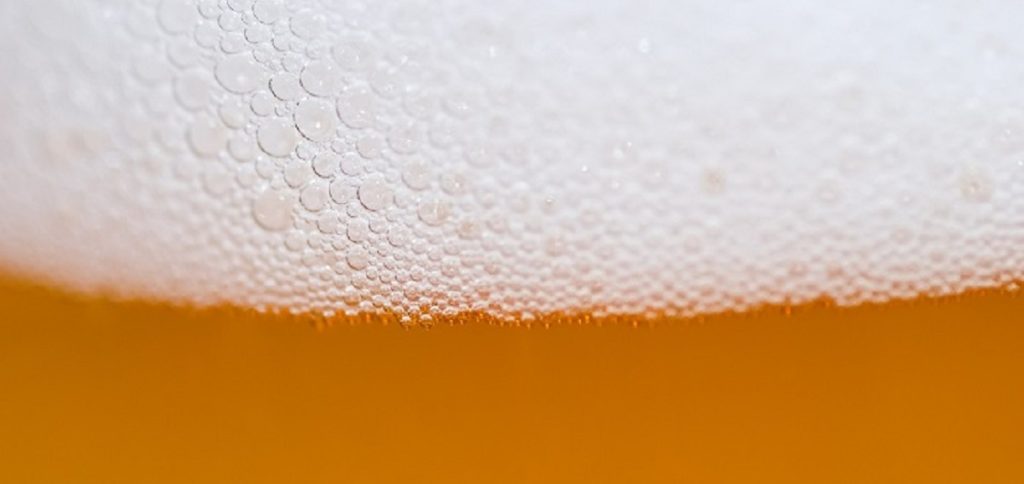Popularity of pale lager beer is uncontested

Pale lager is rated tops as the most popular beer style: Around the world, it beats all other styles in terms of beer consumption. This comes as no surprise as pale lager is mild and light and has a low alcohol content. Germany is also no exception. Here, too, the growing popularity of pale lager continues unabated, especially the Bavarian pale lager style, which is conquering regions that lie beyond the Bavarian border.
More and more people are drinking pale lager. Market research shows that the market share of this beer style rose from 4.5% in 2010 to more than 7% in the first half of 2019. Amid declining beer sales, pale lager is the third most popular style after pilsner and wheat beer. Pale lager is in vogue, also among young adults. Augustiner has played a key role in paving the way for this trend. The Munich-based brewery has built up a cult status in the market over many years with their pale lager and Edelstoff beers. When all major breweries abandoned the Euro bottle for more contemporary bottle shapes, Augustiner remained faithful to the rather quaint old-style bottles. And this has paid off: Augustiner has become a cult brand and the Euro bottle is associated with Bavarian pale lager beer.
With a market share of around 29%, Augustiner ranks as the number one pale lager. Outside Bavaria, competition is stiff as newcomers like Bayreuther pale lager and Mooser Liesl have seized pieces of the pie.
Pale lager looks back on a long-standing tradition
The first brewery in Munich to brew pale beer was Spatenbräu. Until then, beers brewed in Munich were dark. The introduction of pale beer in Munich in 1895 is said to have caused quite an uproar. That day is now regarded as the dawn of pale lager. Despite the controversy initially surrounding this beer style, other Munich-based breweries also jumped on the bandwagon and began producing pale lager just a few years later.
The fact is, pale lager has enjoyed a long tradition in Germany. Until the mid-1970s, Export was the most popular beer in the country. But back then, brands as such didn’t exist; beer was simply beer. As the 1970s rolled in, brands took off and Warsteiner became the first brewery to position its pilsner as a premium brand. Other pilsner brewers followed suit. At the same time, German taste underwent a change. Demands became more sophisticated and people began asking for better quality and lighter, tangier, and more bitter beers. The then rather exclusive pilsner adapted to accommodate the new taste. Some breweries shifted their focus fully onto pilsner, made a name for themselves, and established robust brands. Pilsner took the country by storm. Except for southern German breweries, everyone wanted in on the success. Pilsner became the default and the beer landscape became more monotonous.
Demand continues on an upward trend
Today’s beer drinkers are looking for variety: They want the pleasure factor, and thanks to the craft beer movement, people are more willing to try new flavors than ever before. And the spotlight is on the regional origin of a product. This is where Bavarian pale beer brands can gain traction. Outside Bavaria, wheat beer was, until a few years ago, synonymous with the Bavarian lifestyle, positioning it in second place on the beer market. Now pale beer has established its place there, too. It’s a welcome change. Fresh, mild and tangy, pale lager is seeing booming demand. Besides the Bavarian top brands like Bayreuther, Chiemseer, Tegernseer, Allgäuer Büble, brewers outside Bavaria such as Krombacher, Flensburger, Veltins, Karlsberg and Bitburger (with the Benediktiner brand) now also have lager beer in their portfolios.

The good news is that demand for pale lager remains strong. Breweries like Arcobräu with Mooser Liesl and Bayreuther pale lager are expanding their distribution and are counting on strong partners like beverage wholesalers. Here it’s not the quantity that counts, but sales profit per unit. And with beer specialties like pale lager, this is very high.
For some time now, a few breweries have been offering a 0.33 liter Euro bottle. There are two types: the Giesinger bottle, named after the Giesinger brewery that developed this bottle a while back, and an almost identical one launched on the market a few years later. They both look like a smaller version of the 0.5 liter Euro bottle and are designed to create the same kind of feeling as the big bottles, which many market experts have made largely responsible for the pale lager trend.
According to the latest figures published by Nielsen, German consumers purchased some 2.1 million hectoliters of pale lager at retail grocery and beverage stores in the first six months of 2019. This is a 4% increase year over year.
Industry experts expect the demand for pale lager to continue rising. After all, many people have only just discovered this traditional beer specialty. And because the appealing taste suits almost everyone, pale lager is set to remain an important growth driver in the German beer market.
Beer specialties at drinktec 2021
Everyone interested in discovering new beer specialties should come to the popular brewers’ meeting point at the world’s leading trade fair for the beverage and liquid food industry, drinktec 2021. Here, different beers from all parts of the world, including some innovative pale lager varieties, can be sampled free of charge every day of the trade fair. Drinktec will be held from September 13–17, 2021, at the Munich trade fair.
It does, however, take a long time until the finished product is ready: If you offer innovative products and solutions used in the beer manufacturing process, participate in the next drinktec and present your offerings to an international audience.
